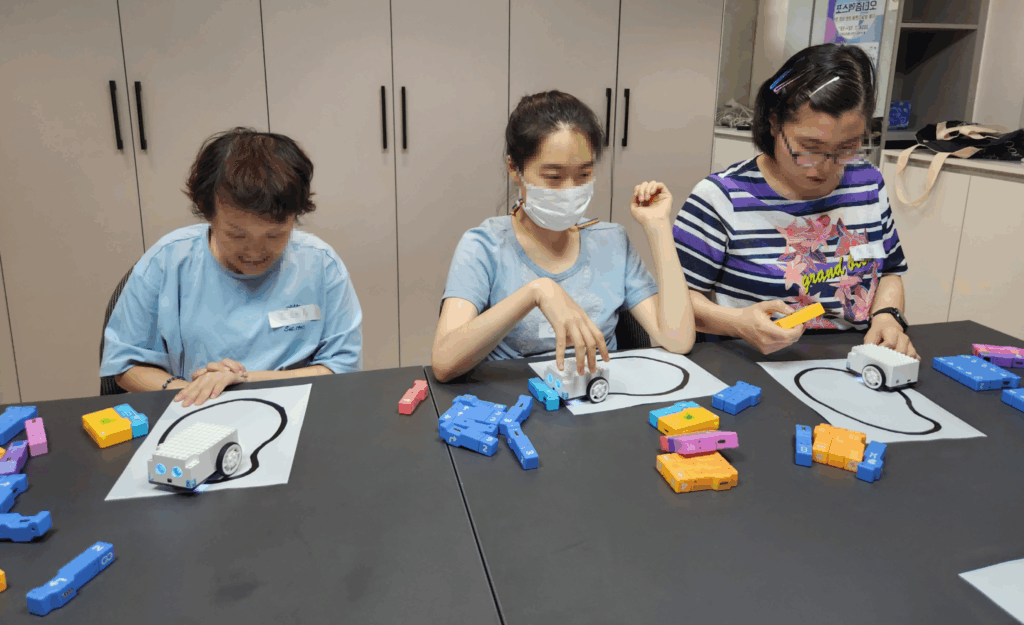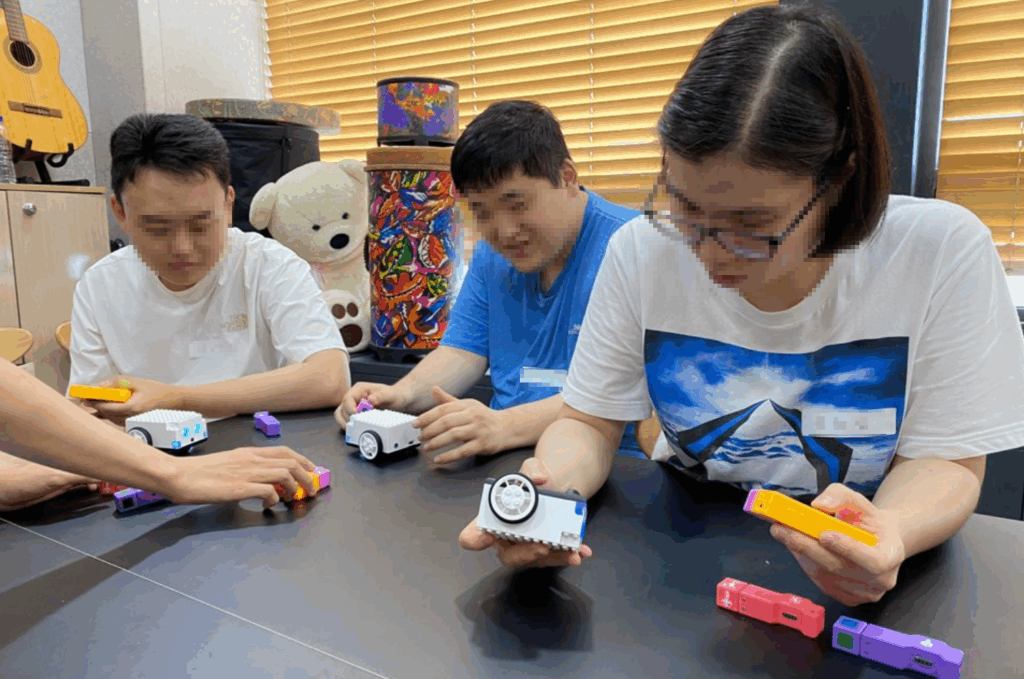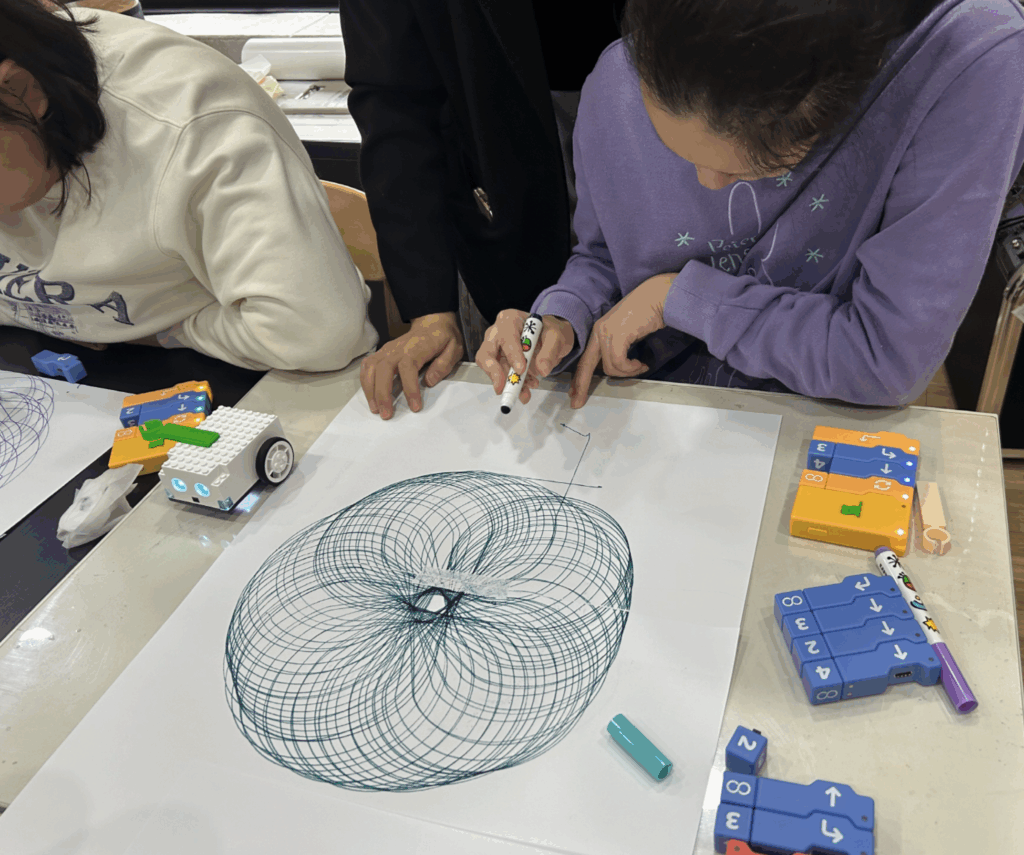Exciting Robot Coding for Individuals with Developmental Disabilities
Opening the Door to the Digital World Through Fun Coding
The COVID-19 pandemic has accelerated the transition to a digital society.
As many services moved online and contactless interactions became the norm, certain groups faced exclusion — notably, individuals with developmental disabilities, who lacked opportunities to build foundational digital literacy.
To address this gap, the Mind Toktok Center(https://kfpd.org/en) launched the “Exciting Robot Coding” program, offering basic coding education to help participants develop a digital sense of the world.

Students Learning to Solve Problems
The Mind Toktok Center supports the independence and social integration of adults with developmental disabilities.
Many participants at the center are in their twenties and thirties and have been learning essential life skills.
Given the characteristics of developmental disabilities, education for them often focuses on self-care. Digital literacy education is rarely done.
Among the students at the center, we taught robot coding for those in their 20s and 30s who can handle electronic devices well. Initially, we were concerned that it might be too difficult for our students. But they found it incredibly fun, and their skills have gradually improved.”
Ms. Ki-won An, program coordinator, and student Da-ae Kim shared their experiences.
Da-ae expressed her excitement: “Coding is so much fun!”
While she was familiar with using smartphones for music and video, coding opened up an entirely new digital world for her.
Instructor Seung-mi Lee designed the program so that students would learn coding almost like playing a game.
“Traditionally, coding was for professional programmers who created apps and software.
Nowadays, even elementary school students are required to learn it.
We used an unplugged coding kit called Coboblocks(https://coboblocks.com).
Through hands-on coding, students can experience coding without needing to understand complex syntax—only logical thinking is necessary.”

Learning Through Movement and Strategy
Students first set a starting point and a destination on a playing road map.
They then plan the route — moving forward, turning left, turning right — thinking through the necessary steps:
“Move forward twice, turn left once,” and so on.
When given a problem, they had to strategize how to solve it.
“Initially, students simply followed the instructor’s demonstration.
Gradually, we moved to setting only the start and end points, asking students to program the path themselves.
Although this seemed like a challenge to students at first , the students began to solve problems on their own.”
Instructor Seung-mi Lee especially remembered Sang-wook Lee for his outstanding progress.
At first, he mirrored the instructor’s moves, but later, he was able to think independently and even solve problems faster than others.
Rather than lowering the difficulty level, the instructor focused on repetitive practice, enabling students to slowly adapt and grow.

A Class Full of Praise and Encouragement
Throughout the sessions, positive reinforcement was emphasized.
Instructor Lee frequently praised the students with enthusiastic remarks like,
“You did a great job!”
Whenever a student solved a coding problem, a celebratory high-five followed.
“When I say ‘Great job!’ the students beam with joy.
Seeing them succeed moves me emotionally as well.
Sharing the joy of achievement strengthens their confidence.”
Beyond coding skills, the students showed real personal growth.
Ki-won An observed:
“Students began looking out for each other.
Previously, due to communication difficulties, some behavior appeared individualistic.
Now, students who solve problems first naturally help others.
They feel proud when they can assist someone else.
They also developed greater emotional composure and awareness.”
Transformative Changes in Students
- Eun-young Park, who used to nap frequently at the center, became fully engaged during coding sessions, thinking deeply about which commands to use.
- Ye-rin Choi, who previously struggled to express emotions appropriately, began offering help to others and developed smoother interpersonal communication.
Through coding, students not only improved their technical understanding but also gained social skills and emotional intelligence.
“Coding cultivates social skills, problem-solving abilities, and creativity — essential qualities for any kind of work or daily life.
Even if students do not pursue careers in technology, the skills they gained here will serve them well in future activities.”
Applying Sequential Thinking to Everyday Life
Instructor Lee explained that students practiced sequential structure through coding—an essential skill in modern life.
“They learned that after executing one block, the next one follows.
This understanding applies to using devices like kiosks, smartphones, and more.
Knowing what sequence of actions is needed to operate a machine requires logical thinking.
I hope the students will apply their coding mindset to solve real-world problems wisely in their daily lives.”

For a Warmer and More Inclusive Digital World
Ki-won An emphasized that digital education for adults with developmental disabilities is critical:
“Some participants can operate tablets and kiosks, while others cannot use digital devices at all.
Without opportunities to practice, the digital gap only widens, leading to greater social and informational exclusion.
Digital education is essential for their full participation in society.”
However, running digital education programs with the center’s limited budget is challenging.
Fortunately, through the Talent for All initiative, the Exciting Robot Coding program became a reality.
“Often when I see participants, I think, ‘Given the right experience, they can be successful.’
Programs like this allow students to discover new talents and expand their worlds.
Thanks to this opportunity, they encountered the digital world not just passively but actively — gaining tools to access information and express themselves.”
In a rapidly evolving world, it is crucial to remember those who move at a slower pace.
We must ensure that no one is left behind in the digital age.
The Exciting Robot Coding class was not just a playful program — it was a meaningful, essential opportunity for growth and inclusion.
The study has been submitted for publication to Disability and Rehabilitation: Assistive Technology(SSCI) under the title “Effects of Unplugged Programming Education on Computational Thinking and Social Skills in Individuals with Developmental Disabilities.”
The study has been published in 2025 in Journal of The Korean Association of Information Education, 29(2) under title “Development and Application of an Unplugged Coding Education Program for People with Developmental Disabilities.”